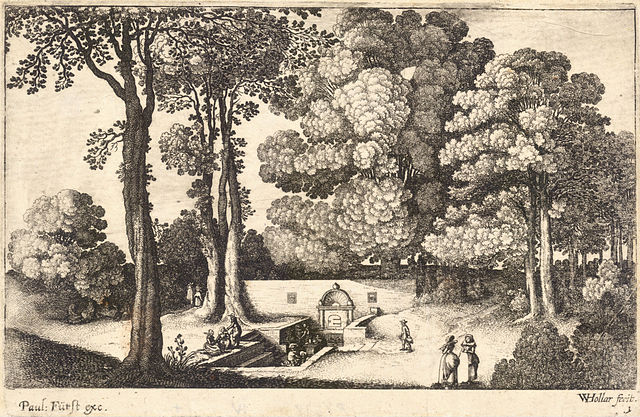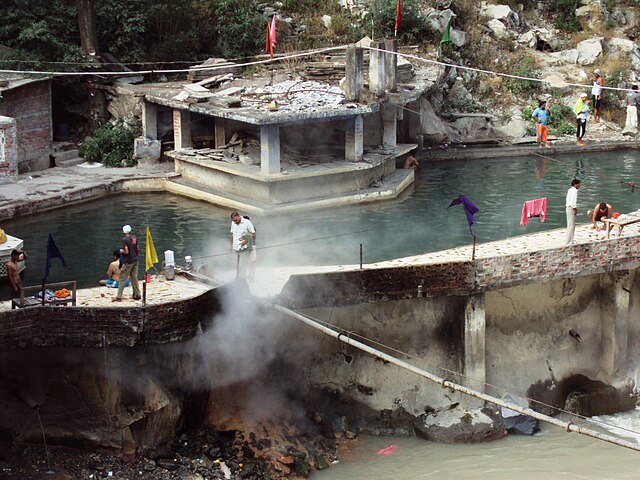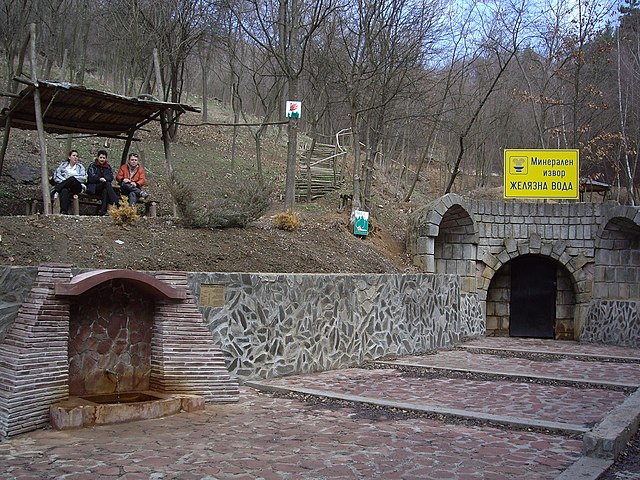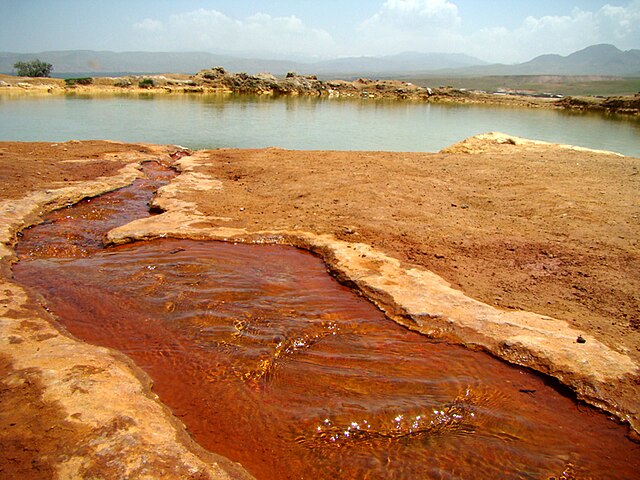Chalybeate waters, also known as ferruginous waters, are mineral spring waters containing salts of iron.
Mineral stains, Rosedale Cliffs – marks caused by chalybeate waters
1860 advertisement
The Chalybeate Spring at Tunbridge Wells
This rather ornate spring well is in the village of Quarndon. A plaque inside the well bears the following inscription: "17th century chalybeate spring well. Once famous spa noted for medicinal waters containing iron. Visited by Daniel Defoe in 1727."
Mineral springs are naturally occurring springs that produce hard water, water that contains dissolved minerals. Salts, sulfur compounds, and gases are among the substances that can be dissolved in the spring water during its passage underground. In this they are unlike sweet springs, which produce soft water with no noticeable dissolved gasses. The dissolved minerals may alter the water's taste. Mineral water obtained from mineral springs, and the precipitated salts such as Epsom salt have long been important commercial products.
The Mineral Spring, etching by Wenceslas Hollar (1607–1677). The unidentified central European spring features a sunken stone basin and ornamental retaining wall.
Tourists and pilgrims having a bath in a hot spring in Gurudwara Complex, Manikaran in Uttrakhand state of India, c. May 2009.
A chalybeate (iron-laden) mineral spring at Breznik, Bulgaria
Tap tapan spring in Azarshahr, Iran








